
Welcome to 'just old flies,' a section of methods and flies that used-to-be. These flies were tied with the only materials available. Long before the advent of 'modern' tying materials, they were created and improved upon at a far slower pace than today's modern counterparts; limited by materials available and the tiers imagination.
Once long gone, there existed a 'fraternity' of anglers who felt an obligation to use only the 'standard' patterns of the day. We hope to bring a bit of nostalgia to these pages and to you. And sometimes what you find here will not always be about fishing. Perhaps you will enjoy them. Perhaps you will fish the flies. Perhaps?
MICHIGAN MOSQUITO
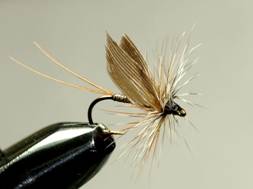
I’m sure this fly was originally developed to represent a generalized dark mayfly pattern. I have found that fish will rise to this fly when they aren’t taking anything else. This delicate pattern is pure elegance. It floats well and is easy to tie.
Materials:
- Hook: Mustad #94840 or #94833 Size: #10-16
- Thread: Black, 6/0
- Tail: Two Pheasant Tail Fibers
- Body: Stripped Peacock Quill
- Wing: Gray Mallard Quill
- Hackle: Brown & Grizzly, mixed
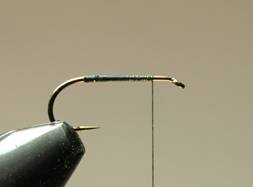
Tie in a good base of thread. This helps to prevent the quill body from slipping.
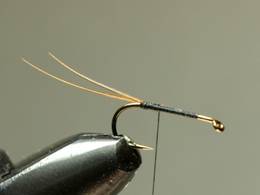
Run the thread back to the bend of the hook and tie in the two pheasant tail fibers in a V pattern. Tie the tail a little long.
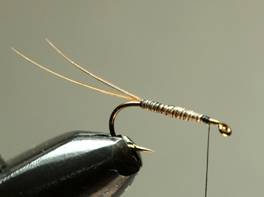
Tie in the stripped peacock quill at the rear of the hook. Run your thread forward. Now wrap quill and tie it off (I pre-soak my quill in cooking oil to prevent the quill from splitting). Before I proceed any further, I take this opportunity to lacquer the body.
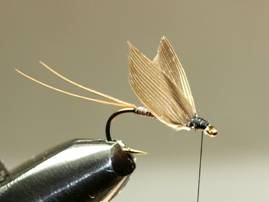
Tie in your prepared mallard quills, tied down like a wet fly. Wrap the head.
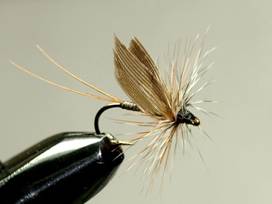
Tie in you two hackles, brown and grizzly mixed. Secure you hackle with thread. Add head cement.
This pattern most probably dates from the 1950’s. The only reference I have ever found on this fly is from “Matching the Hatch” (Schwiebert, 1955). The information provided me was incomplete. I had to guess at the hook sizes, the thread color and the V tail, but based on my experience with old flies I feel it has been reconstructed correctly. I’m sorry to report that the name of the creator of this beautiful Michigan pattern is lost to antiquity.
See you on the water.....
For more information on Michigan dry flies go to: www.michigandryflies.net
[ HOME ]
[ Search ] [ Contact FAOL ] [ Media Kit ]